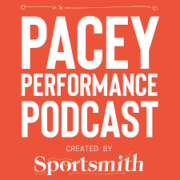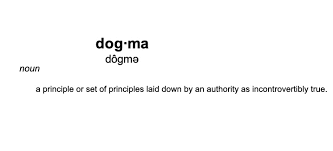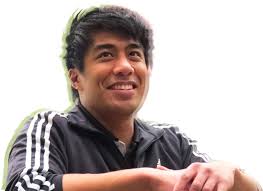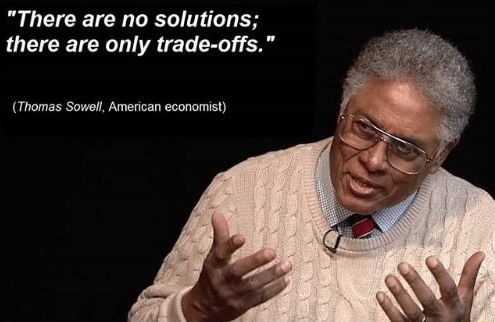Pacey Performance Podcast Review – Episode 464
In today’s blog I’m bringing you another Pacey Performance Podcast Review. This podcast came at a great time as I have been gearing up to support a few professional tennis players on their “pre-season.” It stays on the topic of conditioning for combat sports, which I previously reviewed in the last blog – Episode 473 – Aaron Cunanan – “What team sport coaches can learn from UFC about conditioning methods.”
As Duncan, Danny & Rhys discusses in the podcast chat, certain sports present certain challenges from a physical conditioning standpoint. Even though they were talking about contact sports (MMA. boxing and Taekwondo) I think almost all of the lessons apply to Tennis. In Tennis, you can compete year round, and as one of my colleagues in Tennis, Joe Reed mentioned during his first experience working in Tennis over 2 years ago,
Challenges Periodising for Tennis
“This opportunity opened my eyes to a new sport (tennis) which can only be described as potentially the most physically, mentally and emotionally demanding out of any sport I’ve coached in. Due to the 11 ½ month competition schedule and non-existent off-season, which is seen in the majority of sports. The athletes are expected to endure long weeks in which they have to manage school, and tennis and maintain outside interests from the age of 10 and up. The realities of the sport gave me a true appreciation for the athletes that compete and the level of drive necessary to compete at the highest level.“
I’m not going to get into a mud slinging debate as to which sport is the toughest physically, or which one is the toughest to plan for physically. Let’s just leave it as tennis is right up there. As for the “non existent off-season” that Joe was describing, to give you a taster, the pro athlete I’m preparing a plan for is currently out competing, starting their second of three final events of the year. They will come back for a less than one week “off-season” over the Christmas period, and then doing a one month “pre-season” to prepare for playing around 60+ matches over at least 25 weeks of the year, that will start at the end of January 2024. Now, if that same player isn’t consistently qualifying through to Main Draw (which you need to do to earn professional ranking points) then they likely will need to play for more than 25 weeks to chase those ranking points.
Even though that might not sound quite as hectic as a baseball, cricket or basketball competition period, you have to remember that in reality most players trying to climb up the rankings are out there for 25+ weeks of the year in competition mode, have perhaps a few weeks at best completely off to rest, and 4 weeks “pre-season.” This leaves around 20 weeks to “top up” physical qualities, usually in mini training cycles of 7-21 days, often book-ended by travel from and to their next competition. So you have to allow a few days either side to manage fatigue. In reality you have to be really clear on what are the physical themes that will give you the most bang for your buck and push the physical envelope, as you might only have a 7-day window to create some adaptations that will support their physical development throughout the year.
Episode 464 – Duncan, Danny & Rhys – “Optimising strength and conditioning for combat athletes.”
In this episode, the presenters delve into the intricate world of combat sports, specifically boxing and mixed martial arts (MMA), and the critical aspects of training and preparation that underpin these intense disciplines.
The expert panel includes Duncan French, from the UFC Performance Institute, Danny Wilson, Co-founder of Boxing Science, and Rhys Ingram, formerly of GB Taekwondo and currently with GB Cycling.
Danny has previously been on the podcast – episode 215
Duncan has also been on the podcast – episode 162
🔉 Listen to the full episode here
Discussion topics:
”Conditioning fighters. Where do we start to understand what the athlete needs?”
”@Duncan. For me it’s pretty complex and like everything, there’s no right or wrong answer. For me, a good place to start is the need to understand the balance between sport specific conditioning and general adaptation conditioning. I think that when you get into combat sports which are not necessarily locomotive in nature and lend themselves always to what I would call traditional conditioning, sometimes we get caught or hung up in the need for things to look super specific. It’s got to look like the sport, so it’s got to be taekwondo kicks, or it’s got to be grappling exercises in Ju jitsu or striking efforts. I think we’ve got to be really careful with that, and if I think that if you really start to build out your programming and your planning strategy, you can then understand the right time and place to put those kind of things in there.
I am an advocate of not everything looking like the sport.
90% of the coaches that I’ve worked with in combat sports actually have a preference to do true conditioning, fight specific conditioning, in combat, in sparring. So we’ve got to understand our role in the process here as strength & conditioning coaches, and how we get the adaptations to support the technical/tactical work. So I think that’s where I always start, what’s the balance there?
@Danny: “Boxing is a sport with repeated bouts of high intensity. I’ve heard Duncan say before that in MMA that these bouts may be 5s, 7s, or 10s going for the finish but you don’t know whether that’s going to be in the first minute of a bout, last minute of a bout, or in the middle! You don’t know whether [during this attacking bout] they are going to finish their opponent, or if they don’t get that TKO [technical knockout] they go into a high spike where they’ve got high muscular acidosis and then it’s about whether they can recognise that and recover from it.
With us at Boxing Science we say to the boxers that we want to improve their ability to 1) produce high-intensity performance and 2) have the ability to repeat and endure that. We do that in various ways but one way that I will mention, because of what Duncan mentioned about going from very specific to general adaptations, boxing is 3-minutes on and 1-minute off, and our key session that we use is 30-seconds on, and 3 minutes off, and we normally do four repetitions. Again, for boxers to be bought into that straight away can be difficult sometimes. They scratch their heads and think, what am I doing this for? This looks nothing like the sport, and so then we have to explain to them, the reason why we are doing this is for you to produce the highest amount of intensity you can produce [a 30-sec bout] and then have the ability to repeat that and endure that in a bout, so then you are basically ready for anything when you go into boxing.”
”For someone like me looking from the outside, it would look like you guys are challenged by the long slow distance (LSD) steady state running tradition. But from what Duncan said right at the start, in terms of skill coaches, is that quite the opposite Duncan, where they want it to be specific?”
“@Duncan: it’s a great question. I’m going to answer it in two ways. I think that in all the different combat sports that I have worked with, there is a dogma of high-intensity, high acidosis type conditioning strategies.
It comes down to the “fighter will” and the desire to run through a brick wall, and what coaches tend to do is jump on top of that and push fighters, and drive “going in to the deep water” and ultimately taking your fighter to somewhere where they are going to be in a fight and then understand how they are going to meet and get through that demand which usually is on a high-intensity, high capacity characteristic, right? But, absolutely there is a time to do steady state (I’m going to take out running, I’m going to say steady state exercise) because certainly for our fighters we don’t necessarily do a lot of running, because they are not locomotive animals and we don’t want to get into some issues around joint pain or body postures because it is not a locomotive nature. But we do a lot of steady state cardiovascular, or cardiac output strategy work. Rhys touched on Joel’s work historically, and he was probably the first one who got stuck into the need for cardiac output training, in heavy efforts for prolonged periods of time, and the benefits it can have on stroke volume and heart rate and all the factors that can go into cardiac output.
We have got to remember that aerobic and cardiac endurance is the foundation of repeat sprint ability from the clearance and resynthesis of energy perspective.
So there is absolutely a place for it but I think what I would say is, you’ve got to strategically understand the fight cycle of a combat athlete, and where do you start to put that type of application of training into it? That’s where the secret sauce gets added into people’s programming, because I’m not doing LSD throughout a whole camp fight cycle for an athlete, but I’m certainly putting it in to particular places where I’m using that modality for a very specific adaptation that I’m trying to chase, which is physiologically based. It’s not a sport specific adaptation. I’m driving cardiac development for benefit later down the road when we get into sport specific training.
So yes there is a place for both. What I’ve seen historically is this dogma of everyone’s going to go into the meat grinder and deal with it, and that’s not the most intelligent way to try and train combat fighters. But at the same time, at the right time and the right place, as part of our conditioning strategy, absolutely we’ve got to go there. We’ve got to touch those competition levels of conditioning. Again, it’s the puzzle of periodisation and programming. Never say never to LSD training but there is a time and a place.
Two general rules that we try and adopt.
Number 1. Combat sports are largely driven by repeatability. Your best athletes are going to be the ones that can do things repeatedly for capacity. Whether that is high-intensity discrete efforts, and you repeat those over time. Or whether that is endurance efforts that are repeated over time. Combat sports are about the ability to go again, and again and again, and execute. The best athletes do that. So when you get into conversations around bioenergetics [conditioning] I will always go to as a cornerstone of programming for combat athletes, is making sure they have repeatability in their conditioning skills.
Number 2. We work in weight classification sports so if you think about the need to make weight and one of the athletes is challenged by the weight making capabilities, that totally changes your conditioning paradigm. So you say, so how do you burn calories? Well that’s usually LSD cardio, well that’s the antithesis of performance training, because performance training is high-intensity, intermittent, high volume efforts. Now those two things are at polar ends of the conditioning spectrum. So is Athlete A on a weight making strategy, or a performance strategy? Because you ultimately want to sit them in this performance strategy because that’s hopefully going to get you to the physical capabilities you are going to need for the fight.
But if you don’t make weight whether you are an amateur environment and you potentially can’t compete if you miss weight or in a professional environment and you are going to lose a lot of money if you don’t make weight, one or the other, sitting in this paradigm of weight management driving your programme strategy is actually the antithesis of what you want your performance programme to look like. But because we are a weight classification sport, that’s what happens with some athletes is the pendulum swings from one direction to the other. So that then influences massively what type of training you ultimately have to do. You can write the world’s best training plan but if this athlete is chowing down on too much food or is struggling with the weight management strategy, unfortunately you’ve got to ditch that and get over here, because they can’t fight if they don’t make weight or you are going to lose a lot of money.”
Top 5 Take Away Points:
- Balance of your programme –the need to understand the balance between sport specific conditioning and general adaptation conditioning.
- Rational for your programming – boxing is 3-minutes on and 1-minute off, and our key session that we use is 30-seconds on, and 3 minutes off, and we normally do four repetitions so we need to explain how if we practice producing the highest amount of intensity you can produce [a 30-sec bout] and then have the ability to repeat that and endure that in a bout, so then you are basically ready for anything when you go into boxing.
- Relevance of LSD – aerobic and cardiac endurance is the foundation of repeat sprint ability from the clearance and resynthesis of energy perspective.
- Combat sports are largely driven by repeatability – as a cornerstone of programming for combat athletes, make sure they have repeatability in their conditioning skills.
- Weight making vs. Performance strategy – you ultimately want to sit them in this performance strategy because that’s hopefully going to get you to the physical capabilities you are going to need for the fight.
Want more info on the stuff we have spoken about?
You may also like from PPP:
Episode 457 Dan Tobin & Dan Grange
Episode 444 Jermaine McCubbine
Episode 442 Damian, Mark & Ted
Episode 381 Alastair McBurnie & Tom Dos’Santos
Episode 380 Alastair McBurnie & Tom Dos’Santos
Episode 372 Jeremy Sheppard & Dana Agar Newman
Episode 217, 51 Derek Evely
Episode 207, 3 Mike Young
Episode 192 Sprint Masterclass
Episode 87 Dan Pfaff
Episode 55 Jonas Dodoo
Episode 15 Carl Valle
Hope you have found this article useful.
Remember:
- If you’re not subscribed yet, click here to get free email updates, so we can stay in touch.
- Share this post using the buttons on the top and bottom of the post. As one of this blog’s first readers, I’m not just hoping you’ll tell your friends about it. I’m counting on it.
- Leave a comment, telling me where you’re struggling and how I can help
Since you’re here…
…we have a small favuor to ask. APA aim to bring you compelling content from the world of sports science and coaching. We are devoted to making athletes fitter, faster and stronger so they can excel in sport. Please take a moment to share the articles on social media, engage the authors with questions and comments below, and link to articles when appropriate if you have a blog or participate on forums of related topics. — APA TEAM








